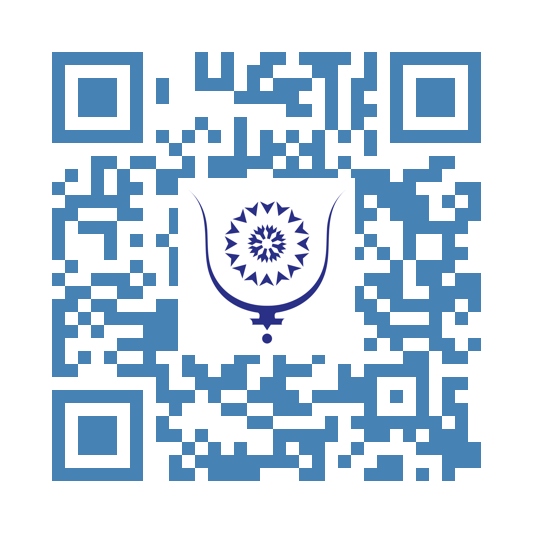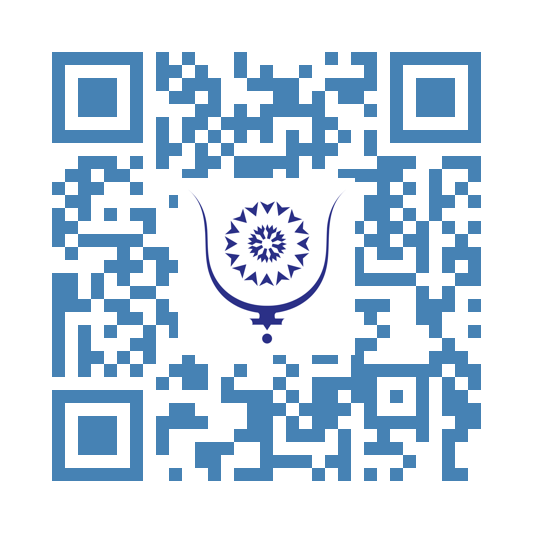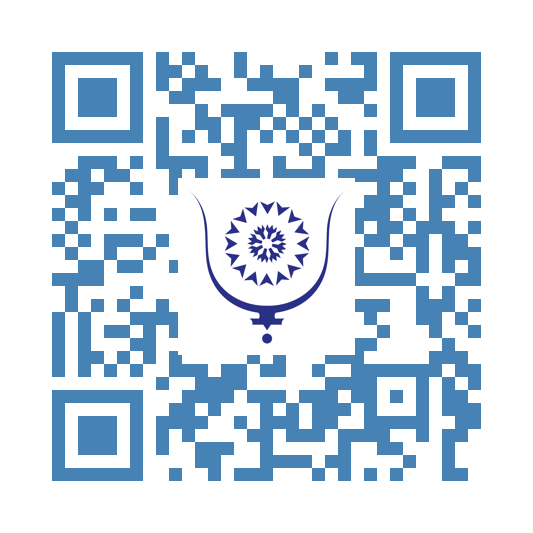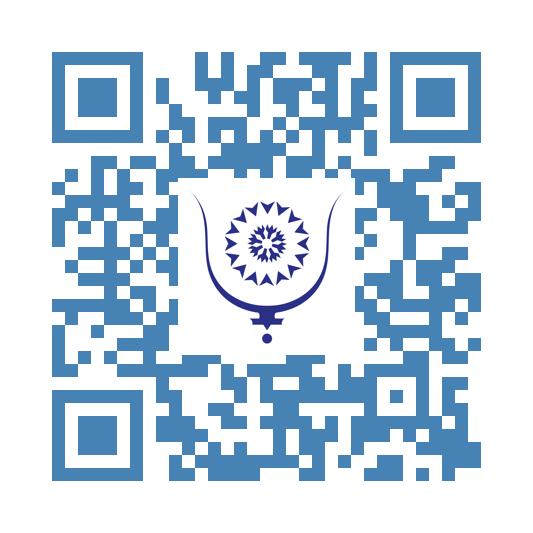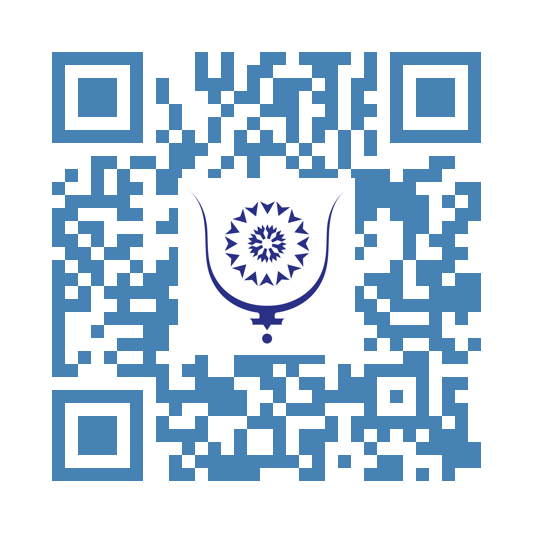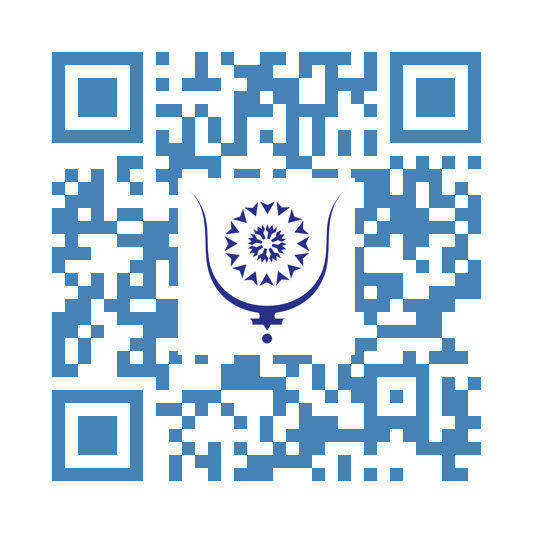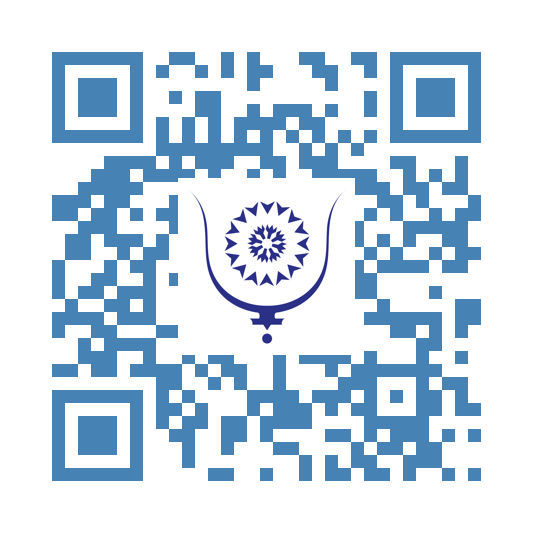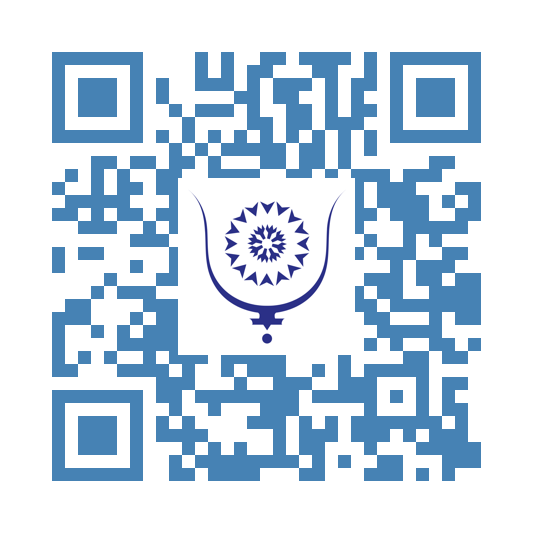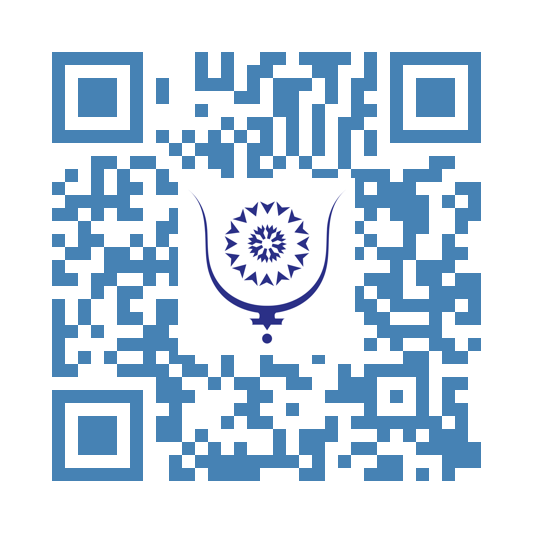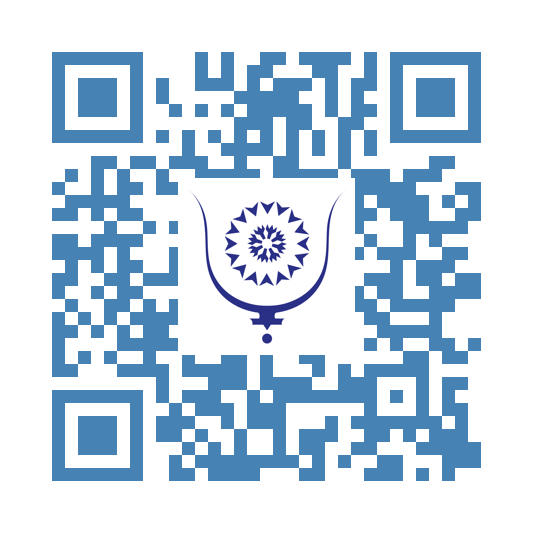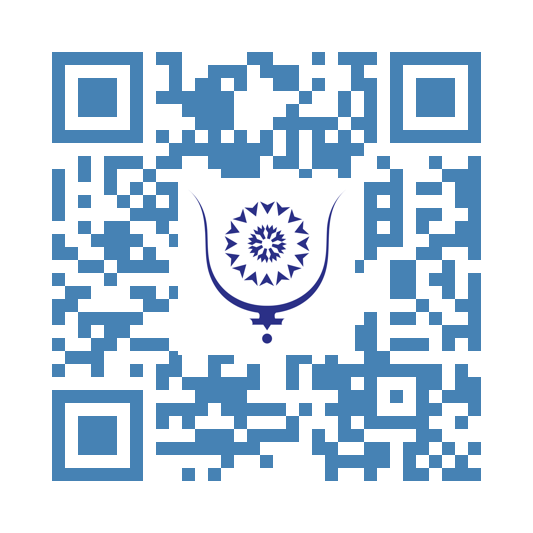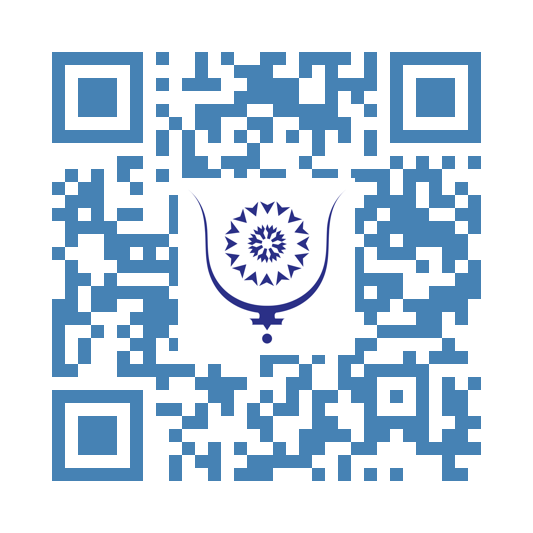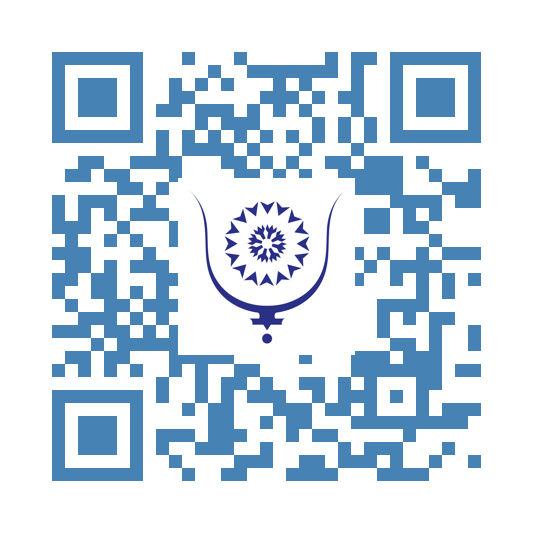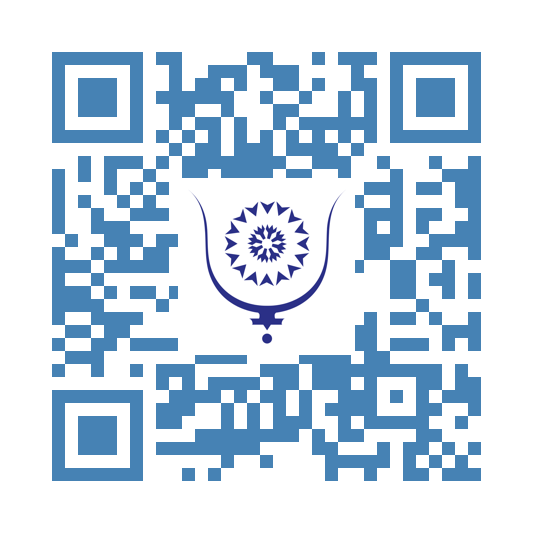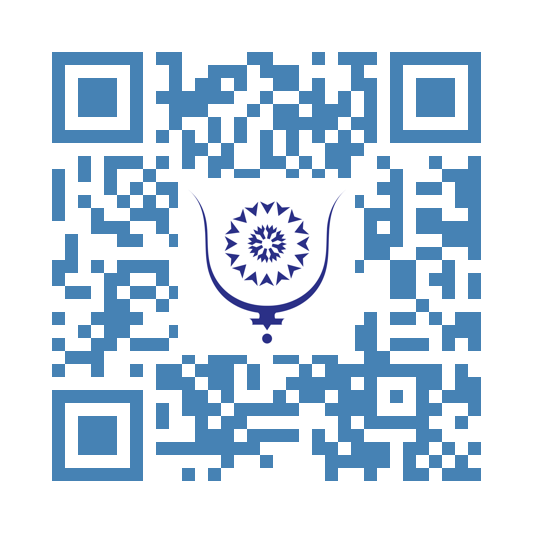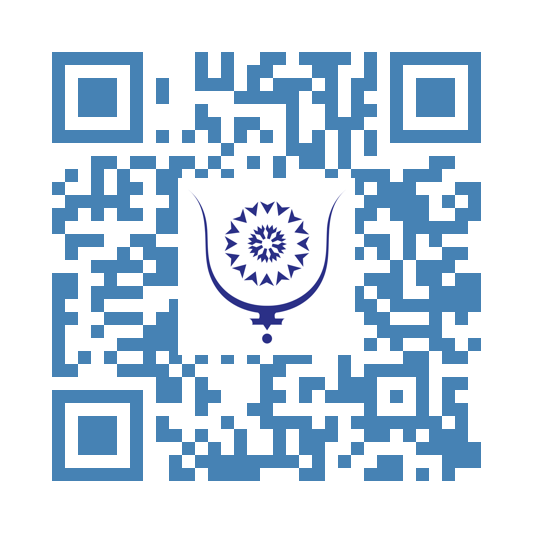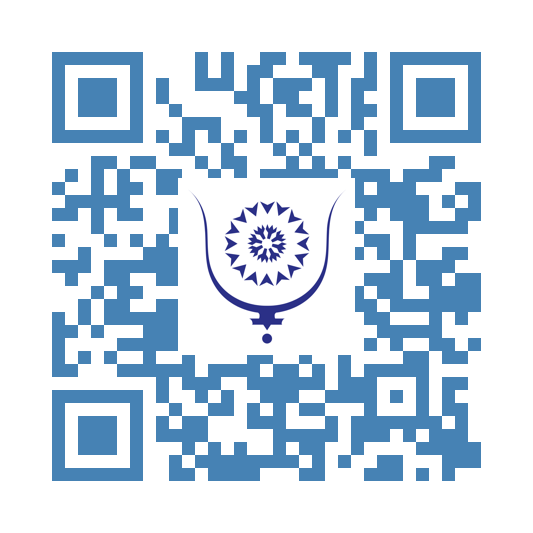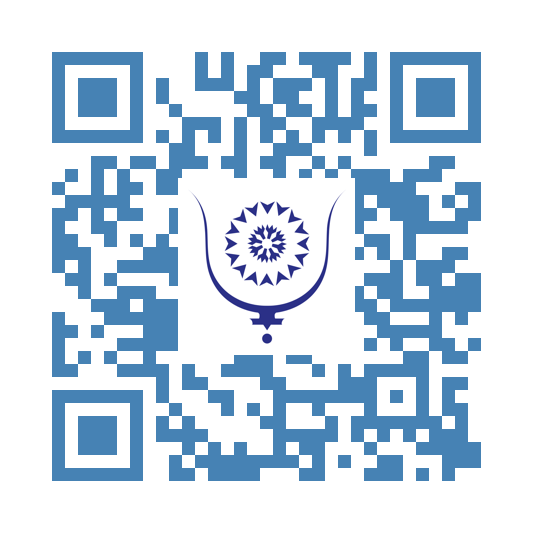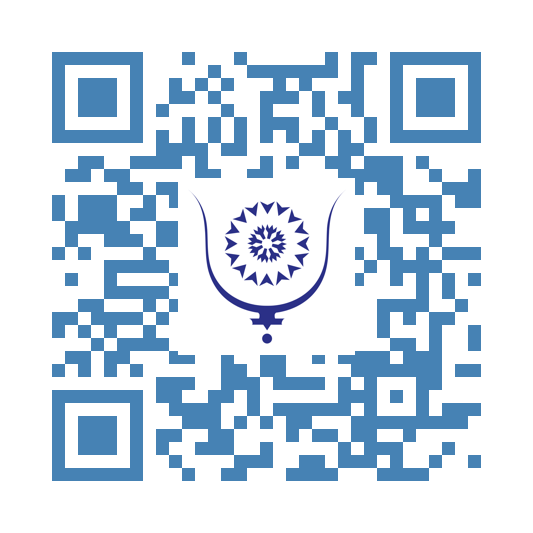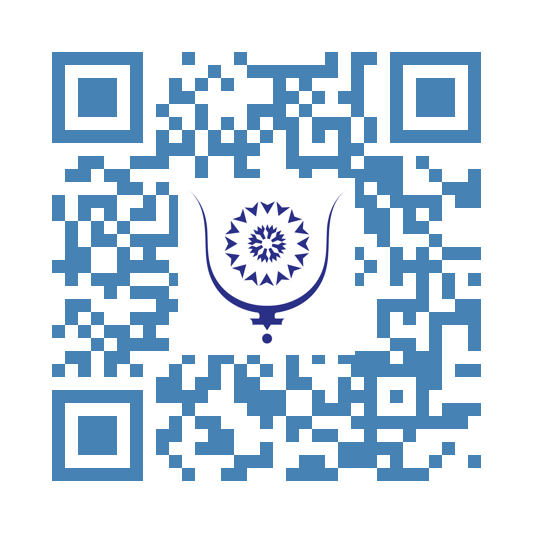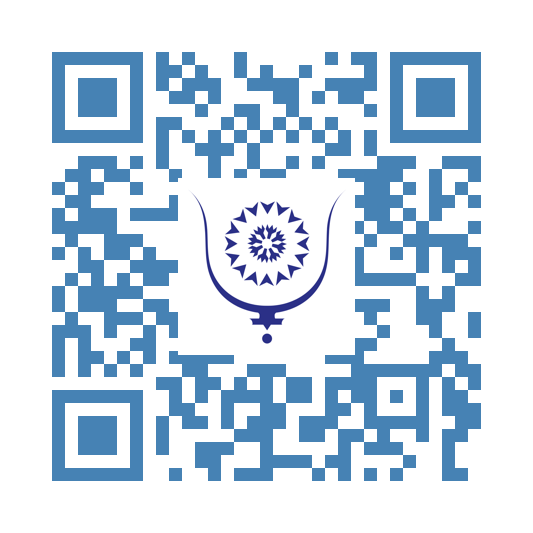6th African Crosscountry Championships, Hammamet Tunisia 25th Feb 2024
3805
Part 2 Team and mixed relay results
Bip Name Nat. Time Points
10 km men
1. Kenya 15
1. 37 VINCENT KIBET Langat KEN 00:28:31,28 1
2. 36 NAIBEI KIPLIMO Mayabei KEN 00:28:40,27 2
5. 41 VINCENT Kimaiyo KEN 00:29:04,10 5
7. 40 BRIAN KIPTOO Bushendich KEN 00:29:14,23 7
2. Ethiopia 27
3. 13 GEMECHU DIDA Diriba ETH 00:28:57,23 3
6. 15 ADISU NEGASH Wake ETH 00:29:12,34 6
8. 12 DINKALEM AYELE Adane ETH 00:29:15,07 8
10. 16 ENYEW NIGAT Tamen ETH 00:29:30,25 10
3. Uganda 46
4. 116 CHEBET Abel UGA 00:29:01,81 4
11. 121 KIPROTICH Levi UGA 00:29:33,88 11
12. 118 MUTAI Ezekiel UGA 00:29:47,20 12
19. 119 CHEPTOEK Elijah UGA 00:30:40,12 19
4. Morocco 73
14. 79 TORISS Hassan MAR 00:30:03,19 14
18. 77 AKKAOUI Mustapha MAR 00:30:32,35 18
20. 78 OUTADHA Hicham MAR 00:30:46,54 20
21. 76 OUTALHA Mohcine MAR 00:30:47,42 21
5. Algeria 85
16. 4 BENKERDAGH Youcef ALG 00:30:10,08 16
22. 2 EL HANNACHI Nabil ALG 00:30:54,00 22
23. 6 BOUCHICHA Hichem ALG 00:31:01,00 23
24. 5 ADOUCHE Youcef ALG 00:31:03,39 24
6. Tunisia 111
15. 101 JHINAOUI Mohamed Amine TUN 00:30:09,64 15
31. 105 ASSADI Makrem TUN 00:32:46,16 31
32. 103 SLIMENI Oussama TUN 00:33:20,45 32
33. 104 SOUISSI Nassim TUN 00:34:05,97 33
xxxxxxxxxxxxxxxxxxxxxxxxxxx
10km wemen
1. Kenya 13
1. 45 CHEPNGENO Cintia KEN 00:32:31,04 1
2. 48 NYAMBURA Virginia KEN 00:32:33,45 2
4. 49 MONGARE Gladys Kwamboka KEN 00:33:10,18 4
6. 50 CHEBET Caren KEN 00:33:39,84 6
2. Ethiopia 28
3. 19 AZIMERAW Asires Degitu ETH 00:33:03,95 3
5. 20 DESSIE Genaneh Anchinalu ETH 00:33:25,87 5
9. 21 SEWAGEGN Gelaw Yalga ETH 00:34:06,21 9
11. 128 AZALE Fantaye Belayneh ETH 00:35:08,01 11
3. Morocco 60
13. 84 BOUAGGAD Hanane MAR 00:35:41,14 13
14. 82 QALLOUJ Hanane MAR 00:35:58,78 14
16. 86 KAHHAZ Kaoutar MAR 00:36:28,76 16
17. 87 AAFIR Fatima MAR 00:36:37,80 17
xxxxxxxxxxxxxxxxxxxxxxxxxxx
8km U20 Male
1. Kenya 10
1. 61 KIPNGETICH Gideon KEN 00:23:16,34 1
2. 65 RUTO Joash Kiprotich KEN 00:23:17,31 2
3. 60 KIPROTICH Titus KEN 00:23:18,02 3
4. 63 MAYWA Simon KEN 00:23:21,96 4
2. Ethiopia 29
5. 35 HAGOS EYOBE Gared ETH 00:23:24,85 5
7. 33 ABDISA FAYISA Gutama ETH 00:23:35,98 7
8. 32 SEMACHW SEWNET Worku ETH 00:23:46,85 8
9. 30 SEYOUM BEHARU Regasa ETH 00:24:03,43 9
3. Morocco 57
12. 93 ERRADOUANI Oussama MAR 00:24:24,53 12
14. 95 AAOURDOU Ilyas MAR 00:24:30,05 14
15. 97 EL MOBARAKY Mohamed MAR 00:25:18,51 15
16. 96 AACHOUR Abdelwahed MAR 00:25:29,73 16
4. Libye 95
22. 122 BEN SALAH Muad LBA 00:29:42,87 22
23. 123 ABOURAS Asil Amer Mabrouk LBA 00:29:55,78 23
24. 124 HIBU Abdoussalam LBA 00:31:12,70 24
26. 129 MOHAMED RADDOU Mustapha LBA 00:32:42,61 26
xxxxxxxxxxxxxxxxxxxxxxxxxxxxxxxxxxx
6km U20 girls
1. Ethiopia 10
1. 24 DIRIBA ROBE Dida ETH 00:20:59,33 1
2. 26 ADEMAS YENENESH Shimket ETH 00:21:00,18 2
3. 28 DAGNAW TINEBEB Asres ETH 00:21:00,56 3
4. 27 YADETI MEKEDES Alemeshete ETH 00:21:02,16 4
2. Kenya 32
6. 56 CHEPKOECH Judy KEN 00:21:03,68 6
7. 54 JEPNGETICH Marion KEN 00:21:05,03 7
9. 57 WAMBUI Lucy Nduta KEN 00:21:09,09 9
10. 58 CHEPKEMOI Sharon KEN 00:21:11,62 10
3. Morocco 58
13. 90 IBN ABDEL MATEY Housna MAR 00:22:04,35 13
14. 92 EL BOUZI Saida MAR 00:22:23,40 14
15. 88 BALI Khadouj MAR 00:22:23,98 15
16. 91 IBN ABDEL MATEY Hassana MAR 00:22:28,69 16
xxxxxxxxxxxxxxxxxxxxxxxxxxxxxxx
Mixed relay
Rang Nom Prénom Nat. Temps
Relais Mixte
1. EDWIN KIPRONO , NSIZA WINFRED Mutai Victor, Miriam Cherip Kenya 00:23:29,13
2. URGESA TEDDESE LEMI, SHANQO BURGUDA ADUNA Embye Adehena Kasaye, Danbobi Dahdi Dube Éthiopie 00:23:46,41
3. RIZQY HAFID, IKRAM OUAZIZ Tindoufl Mohamed, Farkoussi Kawtar Maroc 00:23:49,57
4. RIADH CHENINI, RIHAB DHARI Abdessalem Ayouni, Marwa Bouzayani Tunisie 00:24:55,05
Share:
6th African Crosscountry Championships, Hammamet Tunisia 25th Feb 2024
copy:
https://bluwr.com/p/7946714
XR Voice (Moroccan Dialectal)
4309
XR Voice is an initiative aimed at bridging the gap between scientific research and professional expertise. Recognizing that the advancement of scientific inquiry begins with elevating awareness within the professional realm, XR Voice seeks to gather insights from experts across various fields. By listening to the voices of professionals and their perspectives, this platform aims to explore how scientific research can enhance and refine diverse domains of expertise. Through this collaboration, XR Voice endeavors to catalyze a symbiotic relationship where cutting-edge research not only informs but actively elevates the standards and practices within the professional world.
By attentively considering the perspectives of professionals, this platform endeavors to explore how scientific research can enrich and refine various domains of expertise. Through collaborative engagement, XR Voice seeks to cultivate a symbiotic relationship wherein cutting-edge research not only informs but actively elevates the standards and practices within professional contexts. This mission is underpinned by the fundamental belief that all development begins with a deepened awareness and appreciation of scientific inquiry. Furthermore, this concept encourages experts to utilize Moroccan dialectal Arabic whenever feasible, fostering inclusivity and cultural resonance within the discourse.
“No country has ever prospered without first building its capacity to anticipate, trigger and absorb economic and social change through scientific research.” Dr. El Mostafa Bourhim
Share:
XR Voice (Moroccan Dialectal)
copy:
https://bluwr.com/p/7574596
Life is in the blood.
4319
Dark was the night. **Cold was the ground, and wet.**
One stormy night, the biggest ape took refuge from the lashes of the rain beneath a magnificent oak tree. *"Magnificent"* thought the biggest ape as he gazed the upon the branches stretching far and wide. The night was cold, some cold drops still found their way to his back. But right here, sitting on the biggest root, the biggest ape was at peace. All he had to do is wait.
Two men appeared from each side of the road. One from the east, the other form the west.
"Can I join?", said the main from the east.
"May I sit?", said the man from the west.
*Yes*, nodded the biggest ape.
The men sat. The man from the east opened a small wooden box revealing exquisitely made little figurines. He bowed down an started to pray.
The other man took a book out of his bag. A red book with a shining blue sword on the cover. And started to read.
When the first man had finished, the second one said: "I see you are religious man."
- "I am, I see you do not believe in the gods." Answered he, pointing at the book.
- "I do not. I believe in the power of reason. Man has no need for supersistitions."
- "Reason is limited. How can you speak thus, have you never made a mistake in your life."
- "Have your gods answered all your prayers."
Both men remained silent as they looked at each other.
- "What say you, ape?" Said the man from the east.
Looking at the figurines in the man's box, he answered, his deep voice echoing the rumbles of the skies:
*"They have eyes, yet they do not see. They have hands, yet they do not make. They have mouths yet do not speak."*
Then turning towards the others man's book, he paused.
*"Your sword has two edges, yet it does not cut."*
*"Life is the blood"*, said the biggest as he was making his leave.
*Life is in the blood.*
Thus spake Apathustra.
Share:
Life is in the blood.
copy:
https://bluwr.com/p/7218022
A new version with minor updates.
3951
Hello everyone!
Last week we released a new version of Bluwr. The website looks almost the same, but we have:
- Simplified the login page by removing the photo (it caused some display errors on some phone)
- Made the **Follow buttons** clearer, to make it easier to know if you are following someone
- Fixed an error that caused the number of Bluws to not appear in the analytics table
- Fixed some typos on the french website
Everyday we strive to make Bluwr better.
Thank you for being here!
The Bluwr Team
Share:
A new version with minor updates.
copy:
https://bluwr.com/p/7174546
The Impact of Big Five Personality Traits on Augmented Reality Acceptance Behavior: An Investigation in the Tourism Field
4136
Along with the rapid development of the Internet and mobile devices, the integration of augmented reality (AR) in the tourism sector has become very popular. Utilizing the Big five model (BFM) as the theoretical framework, the study examines the role of personality in influencing the behavioral intention (BI) to use mobile augmented reality in the tourism sector (MART). The study further investigates the role of personal innovativeness (PIV) in determining tourists’ behavioral intentions to use MART. Quantitative research was carried out to test the conceptual model. This paper strengthened the analysis by implementing PLS-SEM method using data collected from 374 participants. The study results demonstrated that openness to experience (OPN) is a strong predictor of MART use. In addition, agreeableness (AGR), conscientiousness (CONs), extraversion (EX), neuroticism (NR), and personal innovativeness (PIV) have all significant and positive impacts on behavioral intention (BI) to use MART.
The present research purpose was to investigate the BFM variables with regards to MART use. The research also examined the contribution of PIV in explaining the BI to use MART. By employing PLS-SEM to tackle the primary study question. The current work makes a significant advance in MART use research. Empirically, the findings achieved are consistent with the BFM. Based on the outcomes of this research, all relationships have been assessed as being statistically relevant. Moreover, PIV positively influences the use of MART. The BI to use MART was positively impacted by AGR (H1: β = 0.128), CON (H2: β = 0.108), EX (H3: β = 0.124), NR (H4: β = 0.322), and OPN (H5: β = 0.169). This implies that users are expected to exhibit a strong BI to use MART when they are agreeable, conscious, extroverted, neurotic, and open to experiences. Additionally, the outcomes of the present paper also significantly upheld the association between PIV and the BI to use MART. Path analysis was found to be significant and positive (H6: β = 0.156); the result states that innovative tourists will intend to use MART. The important limitations are a higher risk of overlooking ‘real’ correlations and sensitivity to the scaling of the descriptor variables.
Share:
The Impact of Big Five Personality Traits on Augmented Reality Acceptance Behavior: An Investigation in the Tourism Field
copy:
https://bluwr.com/p/6999764
Reshaping Sport with Extended Reality in an Era of Metaverse: Insights from XR the Moroccan Association Experts
3888
Extended reality (XR) is becoming a growing technology used by athletes, trainers, and other sports professionals. Despite the rapid growth of XR, its application in sports remains largely unexplored. This study is designed to identify and prioritize factors affecting the implementation of XR in Moroccan sports science institutes. To achieve this, the study employs the A’WOT methodology, a hybrid multi-criteria decision method combining the Strengths, Weaknesses, Opportunities, and Threats (SWOT) technique with the Analytic Hierarchy Process (AHP). Through expert group discussions, the study identifies and categorizes the factors affecting XR implementation into SWOT groups. Subsequently, the AHP methodology is employed to determine the relative importance of each factor by conducting interviews with a panel of sports and XR experts. The study’s findings, obtained through the A’WOT methodology, establish a ranking of the fundamental factors for successful XR implementation in Moroccan sports science institutes. The findings suggested that a strategic approach for implementing XR technology in Morocco needs to be driven principally by a combined approach based on the SWOT opportunities and strengths groups.
The present study investigates the benefits, challenges and opportunities of XR technology in Moroccan sports science institutes based on the SWOT-AHP framework. The strengths and opportunities ratings based on XR The Moroccan Association perspectives are positively inter-preferred for XR technology. Thus, based on this research, the framework provided can be interpreted as a roadmap for supporting the development of the strategic implementation of XR technology in Moroccan sport science institutes, while providing more credible information for decision-makers in the overall process. An in-depth analysis of the findings enables us to conclude that the strategic implementation of XR technology in Moroccan sports science institutes has to be driven principally by the opportunities factors that could assist in overcoming the identified main weaknesses and threats, along with maximizing the strengths. Following these guidelines, decision-makers are expected to initiate a range of activities in order to establish the right external environment in which opportunities can be fully exploited to tackle the principal weaknesses and threats revealed by the analysis. This research provides strong evidence for XR deployment in the sense that it reflects the views of XR The Moroccan Association practitioners and researchers on XR technology.
Share:
Reshaping Sport with Extended Reality in an Era of Metaverse: Insights from XR the Moroccan Association Experts
copy:
https://bluwr.com/p/6872916
[Short Stories #3] Awaiting You
4366
Royal Gambit is an annual event organized by the Cogitaria realm to select its new king. The game involves a chess match between two participants: the candidate and the reigning king. The coveted prize is a tiger mask crown, symbolizing royal authority. The victor ascends to the throne as the new king, while the defeated succumbs to their demise.
For over decades, the throne of Cogitaria has remained unchallenged, as fear of the perilous stakes in the Royal Gambit game dissuades potential contenders. Each year, the reigning king eagerly awaits a challenger, yet no brave soul steps forward to partake in the high-stakes game, leaving the kingdom in a prolonged state of suspense.
However, amidst this prolonged era of unchallenged rule, an exception emerged during one of the annual Cogitaria festivals dedicated to selecting the new king through the Royal Gambit. A stranger, passing through the realm, caught wind of the festivities that had lingered for more than a week, awaiting a candidate brave enough to face the reigning monarch. Intrigued by the mysterious allure of the event, the stranger decided to step into the fray.
As the chessboard opened after decades of dormancy, each piece took its rightful place, setting the stage for the Royal Gambit to commence. The chess pieces clicked and clacked, echoing the strategic dance that would ultimately decide the kingdom's destiny. With a masterful stroke, the stranger executed a climactic checkmate, the chess pieces freezing in place as the kingdom held its breath. Victory was claimed, and the once-elusive tiger mask crown now adorned the head of the triumphant stranger.
*“Every narrative in life has its genesis and conclusion. Time is the only constant, and no one is immortal within their kingdom. The realm awaits the stranger's next move, recognizing that even in victory, the cycle of change and challenge remains an inevitable force.”*
Inspired by this image :
Share:
[Short Stories #3] Awaiting You
copy:
https://bluwr.com/p/6607101
The Death of Liberalism: Nature and the Steppe
3909
Liberalism has failed. The liberal paradigm, which began during the Enlightenment, is collapsing. We are at the end of a great civilizational cycle. Another dark age is upon us. But out of this dark age will emerge afresh the doctrine of nature, and new barbarians to revitalize the West and direct it towards a new destiny.
The fundamental failure of liberalism is that it does not address the problem of nature, and it moreover conceals it with the idea of natural rights, when no such thing exists. Failing to recognize the fundamental laws of nature and concealing them with idealistic human laws of convention is one of the most fatal errors a civilization can make, and may in fact be why all civilizations fall.
The Greeks devoted much of their philosophy to the relationship between Physis, nature, and Nomos, law. Yet the idea of nature, the discovery of nature, is quite rare throughout human history.
In Selective Breeding and the Birth of Philosophy, Costin Alamariu argues that the idea of nature emerges out of a “refinement, abstraction, or radicalization of the aristocratic way of life and of the principle that underlies aristocratic life and the aristocratic worldview.”
He writes, “When the idea of nature merged, it did so in opposition to convention or ‘custom.’ Cows graze, wolves hunt by nature; but different tribes of people deal differently with the dead—cremation, burial, etc.—by custom or convention. It is a notion distinctly similar to our ‘nature versus nurture’ or ‘nature versus culture’ or ‘nature versus social construct.’ The question of what was ‘by nature’ or ‘by convention’ animated much of Greek intellectual life, and had important political meaning, for example, with the aristocratic party generally favoring the side of nature and the democratic party generally favoring the side of convention. In the first chapter I try to explain how a rudimentary idea of nature could have emerged out of the ‘primitive’ or ‘prehistoric’ mind, out of the mind as ruled exclusively by ancestral convention or custom.”
He later continues, “The answer is that it could not. The moment us discovery of nature—which is the precondition of both philosophy and science—is the preserve of one very unusual people, the ancient Greeks, and, long thereafter, those parts of Europe where Hellenistic civilization was promoted, first by Rome, and later in a considerably modified form in Christianity and various Christian states that had inherited some of the roman institutions.”
The idea of nature emerged in the late stages of Athenian aristocracy, as a response to the aristocracies many critics; as a solidification and abstraction of the aristocratic worldview. But we then must ask the origins of the aristocratic worldview.
As we have talked about at length on this channel, the first aristocracies were formed out of nomadic, pastoralist peoples conquering sedentary farmer populations and imposing their hierarchies and worldview upon them. This means that the aristocratic worldview, and the first seeds of the idea of nature, was born among pastoralists peoples.
The sedentary, tribal life of the farmer is ruled by convention and custom, and he is therefore unable to separate what behaviors he has inherited through custom or religion and which through biology and nature. However, a nomadic people would have been able to observe a great many peoples and their differing way of life, allowing them to see the behaviors which remain consistent across the species and formulate a rudimentary idea of ‘human nature.’
Further, the harsh conditions of the nomadic way of life, which relied on the breeding of strong herds, and later, the domestication and breeding of horses, would have made ideas of heredity and breeding, of nature and biology, especially important. Darwin’s natural selection would have been self-evident: only the strong—the fittest specimens—survive the harsh life on the steppe. And sexual selection would have been just as evident: if the fittest specimens are bred, they will improve the quality of the herd over time and even lead to behavior alterations, like the domestication of horses.
Share:
The Death of Liberalism: Nature and the Steppe
copy:
https://bluwr.com/p/6579396
Man, people and humanity
3916
People have always aspired to freedom and prosperity. They always wanted to live from their work. Their pleasure is to see their offspring play, learn and prosper. People have always wanted peace as a way of life. Living in peace…a whole concept, a chimera.
Alas It has never been completely like this. Except for brief, precious and rare moments that history could not remember. These moments remain exceptional, they were brief, even ephemeral.
People have always sought to not be exploited by anyone, all the while they tend to exploit others. Sometimes, unfortunately, by dehumanizing with immeasurable cruelty. A history of exploitation while giving yourself a clear conscience.
In fact, peoples are groups of humans with common traits. People are formed over time and coalesce around common interests. To defend himself and his interests, man can only live in community among a people.
Man aspires to freedom and peace; humans say they have values but humanity does not care. The course of history unfortunately demonstrates this.
Humanity imagined a way to aspire to this freedom to live in harmony: Involve everyone in the decision and give man the impression that he is part of his destiny. Nothing better than a word with Greek etymology to make it serious and credible: Democracy.
This sounds very good.
Yes, Democracy is there in principle to free us and make our voices heard. To realize our desires and respond to our need to live in peace. To live together. To respect others in their human dimension. To limit ourselves to our rights without encroaching on those of others.
Democracy is a sort of safeguard for each and every one. At least that is how it was perhaps imagined and designed.
It allows us, in theory, to express ourselves, defend and assert our rights from the most basic to the most sophisticated.
Democracy is sold to us as the one and only model for the prosperity of people and their moral and material well-being.
Now democracy is playing a dirty trick on us: handing over with tied hands the most mediocre among us, the most ferocious, the hungriest, the most bloodthirsty; to those who rejoice when graves are dug, when blood flows, when a child cries or a woman cries.
Downside...
I was born in a moment of peace, one of the few, just a few years after a cruel war started by Europeans. At the beginning they killed each other. They will then involve poor Africans as cannon fodder.
Absolute cruelty for years.
Millions of innocent people thrown underground.
The break will be short. Without wasting time, humanity will experience the Korean War, that of Vietnam, that of Iraq, that of the Falklands, lots of squabbles in Africa and so on...The instigators and authors are always the same.
Each time it's good versus evil...Each time democracy is involved, rightly or wrongly. The democratic world against the other...A democratic world which defines itself in absolute, total, integral contentment, with double standards as the only alternative of "reasoning" and "judgment" too; eliminating all others from the good square at will.
Each time, genocide, each time cruelty, each time dehumanization.
Each time faced with the helplessness of the man who only wants to live in peace.
As for whether humanity ever existed. Will it exist one day...
You understand, I don't want to talk about Palestine, the wound is still fresh and the criminals are still alive.
Aziz Daouda
Share:
Man, people and humanity
copy:
https://bluwr.com/p/6501606
Style is the man
4418
The particular imprint of exceptional humans has marked history, if not made history. Georges-Louis Leclerc de Buffon, French naturalist and mathematician and member of the Académie Française, undoubtedly marked by the rigor of the exact sciences, stated in his reception speech: ‘Style is the man himself’. Even if Buffon only spoke of literature and science, style thus becomes an objective constant of each of those who mark history with a particular legacy.
Foreshadowing what the Crown Prince would grow to be when King, the late His Majesty Hassan II of Morocco will take up the notion of style, precisely quoting Buffon. He said in a notorious interview : ‘Style is the man’. No one wanted to announce that the reign of His Majesty King Mohammed VI of Morocco was going to be different from his own, although in the logical continuity of history.
Today the trend is to confuse style with a more modern notion of ephemerality: the look.
If the look, which will summarize an outfit, a haircut, colors, is circumstantial and therefore contingent on the moment, style is a constant of the person and accompanies him throughout his life.
Style will experience an evolution but in a logical continuum. If style ends up being validated and confirmed by history’s objective appreciation, the look is not necessarily in symbiosis with style. The look is tainted by subjectivity. It depends on each person’s perception, image and imagination. It is marked by the appreciation we have of the person we meet in a particular circumstance, a particular environment. The look is a subjective composition which can be modeled simply through a photograph which falls into your hands, a video viewed on a train or on a plane, so many images that forcefully invite themselves into the intimacy of the onlooker by forcing the screen from a phone or a tablet, through advertisements and social media.
The look can go so far as to contrast with the style. It is the subjective assessment that we make of the person being scrutinized; and will be even more biased if it is accompanied by a comment even if it is the antipode of objectivity. A film actor can thus be stuck by his look and his acting, the personality traits of a character, when all he has done is succeed in restoring them to us for the duration of a film.
The look is appreciated as long as it coincides with the image we have of the person at the very moment of meeting. It depends on the success of the approach and the reaction of the person encountered. It is conditioned by the circumstances of this encounter, the degree of surprise and the emotional level it arouses. The first glance will be decisive here.
The look generates admiration: everyone will form an idea of the person they meet based on their own appreciation, their emotions and their state of mind at the moment. The degree of sympathy expressed or shared can thus lead to idolatry.
The style commands respect and generates love and appreciation. It is a constant that evolves slowly, surely, and becomes significant. It is assessed on rather objective and verified criteria. Style is indelible and is linked to action through art and manner. Style leaves a mark forever. It is this imprint that allows us to judge and define its contours. History is judge of style.
Aziz Daouda
Share:
Style is the man
copy:
https://bluwr.com/p/6039437
The Sun.
4209
Let me tell you about the Sun. Which nurtures life in everything through its shining radiance. Whose golden light encourages growth and whose warmth mends the deepest rashes and wounds of the soul.
Yet there is another sun, a darker sun, whose shining brightness shines brighter than any sun. That sun never sets and never rises for it is always there. The sun of creation, the sun that was there before the golden sun. The sun that nurtured the seed deep underground before any leaf pierced the wind, reaching for the sky.
For every tree needs two suns, one that nourishes its leaves and one that nourishes its roots.
The tree on Man is the same, for all men are born of the same tree. Roots must go into the deepest depths just as leaves and branches reach for the highest skies.
Thus is the will to life, and thus spoke Apathustra.
Share:
The Sun.
copy:
https://bluwr.com/p/5806518
A New Hope; The Dawn of Computational Pathology
4697
April 12, 2017, marked a revolutionary turning point day in medicine. The United States Food and Drug Administration (FDA) granted de novo 510(k) clearance of the first whole slide imaging (WSI) system for primary diagnosis in surgical pathology. A product abides an FDA regulation as a medical device if it fulfills in labels, promotion, and/or consumption the Federal Food, Drug, and Cosmetic Act standards (Title 21 Code of Federal Regulations part 201, [h]), yielding adherence to pre- and post-marketing regulatory purview. The intended usage will decide on the governing pathway yet protect public health.
In stark contrast to digitizing radiology initiated in 1980, digital pathology has been lethargic, with many perceiving the late regulatory field as the main barrier to its deployment. Now, such a milestone is a testament to the tenacity of The Digital Pathology Association, the strong evidence of safety, effectiveness, and noninferiority to the discordance rate of glass slides from Philips IntelliSite Pathology Solution - the first WSI solution - and, of course, an open-mindedness and forward-thinking of FDA for its implications for pathologists and patients. The first «system enables pathologists to read tissue slides digitally to make diagnoses, rather than looking directly at a tissue sample mounted on a glass slide under a conventional light microscope. » «Because the system digitizes slides that would otherwise be stored in physical files, it also provides a streamlined slide storage and retrieval system that may help make critical health information available to pathologists, other health care professionals, and patients faster. » (Alberto Gutierrez, Ph.D., 2017). Under those conditions, the least inevitable scenarios, such as an expert second opinion and on-site pathologists' hurdles, and the essential to dispatch samples—a process that might prolong for days or weeks contingent on variables like distance, sensitive item, and transportation mode—are eased.
Once again, pathology is among the complex subjects encountering global health issues, a chronic shortage of pathologists, stress/burnout, and substantial workloads, e.g., 0.1 pathologists/100k habitats in Africa. Even beyond a century, it has retained a vital function in diagnosing cancer -the 21st-century pandemic. But while pathology governs treatment decisions, patient care avenues, and oncology research, it is paradoxically the most vulnerable to inter- and intra-observer agreement matters. In short, digital pathology, virtual microscopy, or so-called “whole-slide scanning (imaging)”, is to cope with today's pathology pressure by streamlining workflow, widening collaboration and telepathology, boosting diagnostic confidence, and educational purposes, yet unsurprisingly, new horizons have emerged!
«Not only will it promote increased efficiencies and collaboration between pathologists, but it also opens a completely new dimension toward computational pathology, which aims to increase accuracies and ultimately enhance patient care. » (Russell Granzow, 2017).
Share:
A New Hope; The Dawn of Computational Pathology
copy:
https://bluwr.com/p/5480090
Sports performance, Africa has only one choice...
3748
The extraordinary experience of Nezha Bidouane, Hicham El Guerrouj, Khalid Skah, Brahim Boutayeb, Nawal El Moutawakel, Salah Hissou, Hasna Benhassi, Zahra Ouaziz, Said Aouita, Jawad Gharib, Ali Ezzine and so many others has made Morocco a super power of world athletics. At that time, Morocco was among the notable countries in world athletics with dazzling results and a continuity of almost a quarter of a century.
Morocco was even fifth in the world in 1999, during the world championships in Seville.
Very high-level performances, charismatic athletes, Moroccan coaches trained properly in Morocco, an inspired federal policy, unconditional support from the State, generous royal concern have made this Morocco great for athletics.
At the world level, for the training of high-level athletes, there are two successful and time-honoured experiences, two ways of training and producing performance and a third which is gaining a good place, which is even becoming the more productive, the one invented and implemented in Morocco.
This Moroccan method has been emulated. It was adopted by the IAAF at the time, by the African Confederation and also by more than one country.
Roughly speaking, you have the American system with large, very rich universities having all the means to train very high-level athletes. American universities are developing scientific research in sports performance, investing in large laboratories in exercise physiology, psychology and other cognitive sciences, sports sociology and all other areas of physical activity for well-being and the production of sports performance. They invest in sporting performance to improve and consolidate their respective image, in a major inter-university competition. They are therefore the most productive in the world, benefiting from developed knowledge, an unrivaled level of supervision and an inspiring historical record. They are a super power and provide the USA with all-round sporting power. So the USA has always been one step ahead of the rest of the world.
Alongside the American system there is the European system with large clubs supported by very rich local authorities and very generous sponsors. This system therefore produces the second largest sporting power in the world and this is seen at the various world championships and the Olympic Games every four years.
In Africa we have neither of these systems, nor could we have one in the near future.
So, in Morocco, we invented our own path which is to design and set up a national institution which brings together very talented young people selected from a good prospecting and talent detection system. The selected ones are then placed in an environment of high competence, optimized performance, under the leadership of 100% Moroccan executives. Having an exclusively national framework is of great importance on a cultural, sociological and emotional level. We must never forget that sporting performance is a cultural expression. Everyone's motivation is the same: to represent the country with dignity. This is what allowed us for more than 20 years to be among the ten greatest nations in the world, to have dozens of titles and world records.
I think this is the path for African countries. In Kenya too, almost all athletes come from a similar system initiated by certain equipment manufacturers and by the IAAF in the past. Ethiopia has adopted the same path. This is also the path that the CAA is currently developing by multiplying the African Athletics Development Centers -AADC-. These are executive training and training units for young athletes. Unfortunately the system is threatened by lack of resources, World Athletics having chosen not to follow the CAA in this voice.
Such a system can only work on the basis of an intelligently thought out and effectively carried out detection system.
Why don't we see new generations of great Moroccan athletes, would be the question that more than one would ask me?
Sports performance, if it depends on the will of leaders and a favorable environment, it depends above all and above all on the men who work in the system, on their commitment and their genius.
Structures and funding are not sufficient to generate high performance. We are here in a cultural domain of permanent creativity, based on a vision which combines will with cultural aspects but without neglecting the consideration of scientific advances at the highest level.
The foresight of decision-makers, the level of confidence in management, the continuity of the system are all factors which will impact the process of producing sporting performance. As soon as one of these factors is disturbed, the machine jams.
We must therefore conclude that to produce sporting performance, the continent has only one choice: that of training centers. This is what football does brilliantly in certain African countries including Morocco.
Aziz Daouda
Share:
Sports performance, Africa has only one choice...
copy:
https://bluwr.com/p/5453887
But what is Gamal Abdel Nacer still doing in Conakry...
3873
What was my surprise when I was told that for my stay of only 3 nights in Conakry, I was going to stay at the « Hôtel de L'Université » which is in fact called Gamal Abdel Nacer University.
We must return to both the recent and distant history of Guinea Conakry to understand what Gamal Abdel Nacer is doing, or rather was doing, in this region of Africa.
The University is now some 60 years old. It has no less than 35,000 students and some 620 teachers. The students represent nearly twenty countries.
It is a university that aims to be innovative and competitive in the service of socio-economic development and environmental balance in Guinea, in the region and in the world.
Built with the support of the Soviet Union in 1962, it was known until 1984 as the Polytechnic Institute of Conakry. The University was then named in honor of Egyptian President Gamal Abdel Nasser. It served for a long time to provide the country with its elites.
Here Gamal is honored, elsewhere he was named Paper Tiger or even Tiger of Falouga, so much so that he puffed out his chest and suffered a series of defeats and disasters that his country continues to pay till today. An excess of "philosophical" vision undoubtedly misguided, meaningless slogans, based on an ideology without anchor, neither social nor even less cultural or historical, if not just a dream.
The Officer who called himself free had, with a group of friends, overthrown the very young egyptian Monarchy as a Kingdom. Previously, Egypt had Sultans. Fouad II overthrown by Gamal and his barracks friends, acceded to the throne in July 1952, aged only 7 months and 10 days, after the abdication of his father Farouk.
Farouk thought that by abdicating, leaving the throne to his baby with a regent who seemed to be accepted, he would calm the ardor of the officers and thus save his young monarchy. It didn't work. Farouk ended up leaving the country with honors, thus avoiding a bloodbath and confrontation between the military and pro-monarchist forces. The free officers will then name Mohammed Naguib president of the Arab Republic of Egypt in June 1953.
An Arab Republic in Africa, heir to the greatest civilization that the African continent and the world had given birth to.
Gamal was appointed prime minister in April 1954 but not for long...A few months later, on November 14, 1954, poor Naguib was kindly thanked and Gamal succeeded him quite naturally. Naguib born in Sudan will then go and write books...At the time it should be remembered, Sudan was part of Egypt but under shared sovereignty with the United Kingdom. Sudan will be declared an independent state in January 1956.
The free officers of Egypt in fact, carried a project of national independence, believing that Egypt was not in fact free and that the English still had an ascendancy over the monarchy. There was also there, and above all an air of revenge of the common people, who were the young army officers, on a Cairo bourgeoisie or even nobility, speaking mostly in French, moreover, of Turkish or very close.
The officers naively promised and no doubt dreamed of rapid economic development for the benefit of all...A somewhat special vision of communism and a socialism which was sought for a long time without ever succeeding, based on the doctrine of the Baathist Michel Aflak, a Syrian which skillfully combines socialism and pan-Arabism.
Michel Aflak is a fan of secularism and freedom from Western interests. The Baath subtly opposed socialism to Marxism, a way of satisfying the deeply religious populations, predominantly Muslim and not only, and for whom Marxism was synonymous with atheism. We are here in the Middle East, the cradle and heart of all monotheistic religions...
The Baath found in Gamal the ideal tribune. His inflammatory speeches met with an immense echo in Egypt and the Arab world: the army then appeared as the savior of an enlarged nation. The Arab Nation…
Nacer's speeches mobilized and inflamed crowds at home and beyond. Its Cairo Radio, then received on short wave throughout the so-called Arab world, would play a capital role in propaganda that would restore pride to populations who had not yet emerged from the yoke of colonization in the region.
Mohamed Abdelwahab will add a nice layer with the song Douae Echark (Call of the Orient) to the words of the great poet Mahmoud Hassan Ismail. It is undoubtedly one of the most beautiful pieces of music by the Egyptian virtuoso. Oum Kaltoum will do his part in 1964 with Ala Bab Masr (At the Gates of Egypt); words by Kamal Echanaoui and a composition once again by Mohamed Abdelwahab. She will also sing among others Ya Gamal ya Mital Alwatania (Gamal Example of nationalism or patriotism...). But the one who sang the most on the occasion of the July 23 celebrations was the young singer of that time, Abdel Halim Hafez, notably with his famous song Ihna Chaab (We the people).
In fact, we are here faced with an extremely well-oiled system serving a cause that wanted to be pan-Arabist in the service of a military regime that wanted to be exportable to all countries with the Arabic language as the common denominator.
The revolution was intended to be Egyptian but was to extend to the entire Arab world. It will succeed in overthrowing regimes almost everywhere, in Iraq, Libya, Syria... it will settle in Algeria and fail to make Hassan II of Morocco bend for example... The war of sands (Guerre des sables) was imposed to him but his solidity and his political sense will surprise them...
Share:
But what is Gamal Abdel Nacer still doing in Conakry...
copy:
https://bluwr.com/p/5399998
Got venom? Snakes do, and they're not afraid to share!
4339
Snake venom is basically the snake's own zesty hot sauce, but instead of spicing up tacos, it's designed to knock out dinner—or an unlucky human.
Imagine this: a snake, a legless danger noodle, whips up this venom, a mix that says, "Back off, buddy, or you'll feel funny!"
But here's the kicker: scientists get a kick out of this venom, milking snakes like tiny, scaly cows to make medicine.
Yep, the stuff that can make you see double is also being used to fix your health troubles.
Talk about a snake with a side hustle!
Share:
Got venom? Snakes do, and they're not afraid to share!
copy:
https://bluwr.com/p/5141977
Even in the digital age, travel agencies remain an ideal partner for hotels
4058
In the digital age, although many travelers book their stays online directly, incoming travel agencies remain partners of choice for hotels.
Operating a hotel requires an in-depth study of the target clientele, competitors and partners with whom we can collaborate to optimize revenue management.
A receptive travel agency or a DMC (Destination Management Company) offers its clients (individuals and corporates) support from A to Z, from the design of tourist activities, transport management, reservation of accommodation and seminar rooms , the inclusion of catering services, and even the provision of more special services (rental of translation equipment, audiovisual equipment, etc.) during their stays, tours or events.
This is a stable source of customers for the hospitality industry, as travel agencies tend to refer their customers to the same trusted providers.
Travel agencies make it possible in particular to increase occupancy rates, to generally improve the guest experience of customers thanks to the advice and support offered to customers and the local experiences that they will offer, they make it possible to streamline and to optimize hotel operations, particularly check-in, and to alleviate pressure on sales and marketing teams.
Indeed, they often manage the logistical and administrative aspects of reservations, allowing hotels to focus on improving the guest experience and other operational aspects.
Depending on the type (leisure or business), its capital structure (belonging to an international chain, a hotel investment group or family-owned), its size and its range, the advantages for a hotel in making travel agencies Travel of top allies may vary.
Here are some reasons why hotels may benefit from collaborating with travel agencies despite the evolving digital landscape:
Travel agencies often benefit from a global reach through their sales representatives, partner issuing agencies and their presence at international trade shows. They thus attract a large audience. Collaborating with these agencies allows hotels to reach potential guests who might not have discovered their property through other means.
Conversely, partnerships with well-established Moroccan travel agencies can help hotels reach a local audience. Agencies can promote special packages, seasonal offers and special events, helping to attract national clients.
Agencies invest heavily in online marketing, which can be costly and complex for an individual hotel. By working with agencies, hotels can leverage their marketing campaigns, social media presence and partnerships to attract more guests.
They offer multi-channel distribution, allowing hotels to reach different market segments through various online channels. This can include websites, mobile applications and especially partnerships with other travel platforms such as Travel Exchange, American Express, Perfect Stay, Voyage Privé, Ctrip, etc. which deploy cutting-edge digital strategies to enable new categories of Internet users to travel more, notably taking advantage of last minute flash sales.
Travel agencies can also help hotels optimize revenue by dynamically managing rates and availability. This is particularly important to maximize profits and fill available rooms, especially in low season.
It is also important to note that hotels must find the right balance in their distribution strategy, avoiding excessive dependence on certain online platforms.
They can sometimes specialize in source markets not usual for the destination (for example in Africa, Eastern Europe, Asia or Latin America), thus offering hotels the possibility of reaching a diversified clientele, limiting the risks of business continuity linked to conflicts, disasters, etc.
Finally, DMCs (Destination Management Companies), through their global vision of the destination and their collaborations with numerous hotels, can be good propagators of best practices. They are also an excellent source of opinions, feedback and recommendations to be used to improve customer satisfaction.
Studies carried out in the tourism sector in the aftermath of covid often lead to the same conclusions among which we can find the importance of addressing firstly to a local clientele, the need to develop inclusive tourism anchored in its environment, the urgency of the ecological transition but also the need to strengthen cooperation between the different players in the industry in order to make it more stable, more sustainable and therefore more attractive both for investors and for talents.
Share:
Even in the digital age, travel agencies remain an ideal partner for hotels
copy:
https://bluwr.com/p/5061625
"She"
4124
She held on her the life struggle with grace
Time to time and over, breaks made haste
Tears wet ran down her face
But she prevailed and found her way
Loving herself and letting her dark thoughts stay
In the moments the task at hand, she has nothing to worry and believes she can
In the end after time has passed
She will look back and have a laugh and remember the times tough and true
We are not our thoughts ----------- we are what we do
Share:
"She"
copy:
https://bluwr.com/p/5016755
"Perfect Mistakes"
3693
You cannot make mistakes
They are perfect moments to the art of your life
You cannot have perfection
Because it's the flaws that make you the most beautiful
Share:
"Perfect Mistakes"
copy:
https://bluwr.com/p/5010165
"The Ones"
3589
We crave “the ones” that need salvation
We crave “the ones” that face starvation
Not for saving or comforting our souls
The wall “the ones” they climb, brings them to us
We are the rope, the strong rope they need.
Tattered, frayed and a little torn but able to hold giants
Share:
"The Ones"
copy:
https://bluwr.com/p/5004145
Supernova
4127
One of those sunless nights
My feet planted firmly in the sky
I will call your name
Meandering through the stars
See if gravity pulls us apart
You might forget my soul
An event without horizon
Drink the poison of my hope
I will swallow my reason
He who wanted to elope
In a supernova
Share:
Supernova
copy:
https://bluwr.com/p/4804515
Angioedema: "From localized swelling attacks to potentially fatal asphyxia"
4250
Angioedemas are characterized by an accumulation of fluid in the mucous membranes and skin resulting in swelling of the face, limbs or genitals.They may carry a risk of asphyxiation when the throat is affected.
ANGIOEDEMA OF ALLERGIC ORIGIN
In the vast majority of cases, it is an angioedema of allergic origin, about 20% of the population are affected at some point in their life. Often associated with an urticaria, it can be caused by food, insect bite or drug. The treatment of this histamine angioedema is based on corticosteroids and antihistamine drugs. In the most severe cases (quincke's oedema), adrenaline is essential to avoid anaphylactic shock (spread of allergy throughout the body).
THE HEREDITARY ANGIOEDEMA
Angioedema may have another cause, often unknown : it is the hereditary bradykinic angioedema. This rarer form occurs most often during childhood or adolescence, edema develops gradually and recidivally in a few hours and persists for an average of 2 to 5 days and disappears without sequelae. The frequency and severity of seizures vary according to the patients and for the same patient according to the periods of life. Certain events such as dental procedures, infections, stress, pregnancy ... are the triggering factors of the crisis. The swelling may affect the abdomen, causing severe pain, nausea and vomiting as well as diarrhea. Laryngeal edema is life-threatening with a 25% risk of death in the absence of appropriate treatment.
Even more rarely, bradykinetic angioedema exists in an acquired non-hereditary form, usually occurring in adults over 50 years of age and subsequent to another disease (autoimmune or cancerous) or to certain drugs such as antihypertensive drugs of the family of angiotensin converting enzyme inhibitors or antidiabetic agents..
The treatment of bradykin angioedema attacks is based on the use of drugs that are not yet available in Morocco (subcutaneous injections of icatibant or intravenous C1Inh concentrate). Tranexamic acid or danazol are basic treatments for the disease.
THE MOROCCAN ASSOCIATION OF ANGIOEDEMA
The Moroccan Association of Angioedema Patients (AMMAO), chaired by Mr. Imad Elaouni, was created in February 2018 by civil society people and members of the medical and paramedical profession with the aim providing information and awareness to the population about these pathologies as well as the unification of the efforts and the assistance to lend to the people suffering from them. Professor Laurence Bouillet, Professor of Internal Medicine and coordinator of the national reference center on angioedema in France, is the honorary president. AMMAO is also a member of the global network of angioedema -HAEI.
-Dr Moussayer Khadija, medical doctor in internal medecine, chairwoman of the alliance of rare diseases in Morocco, vice-president of the Moroccan Association of Angioedema Patients (AMMAO),
BIBLIOGRAPHIE
- Isabelle Boccon-Gibod , Laurence Bouillet, MD , Clement Olivier, Clinical Characteristics of Hereditary Angioedema (HAE) Type III Patients Compared with Those with HAE Type I/II , JOURNAL OF ALLERGY AND CLINICAL IMMUNOLOGY 26/01/13, Doi : 10.1016/j.jaci.2012.12.791
- Laurence Bouillet, Diagnostic des angioedèmes héréditaires, La Presse Médicale, Volume 44, Issue 1, 2015, Pages 52-56, ISSN 0755-4982, https://doi.org/10.1016/j.lpm.2014.06.027.
- Khadija Moussayer, Les angioedèmes en débat à Casablanca le 19 janvier 2019, Mescursus 29 Décembre 2018. https://medcursus.com/442/les-angioedemes-en-debat-casablanca-le-19-janvier-2019
- Khadija Moussayer, On estime que 2.000 personnes sont touchées par les angioedèmes bradykiniques au Maroc, Le Matin ma, 4 janvier 2024 https://lematin.ma/express/2022/maroc-compte-2000-cas-angioedeme-bradykinique/384170.html
EL ANGIOEDEMA : "Desde los ataques de hinchazón localizados hasta la asfixia potencialmente mortal"
El Angioedema se caracteriza por una acumulación de líquido en las mucosas y en la piel, lo que produce unhinchazón e inflamación de la cara, de las extremidades o de los genitales.
Puede poner en peligro la vida del paciente, cuando afecta a la vía aérea. En la gran mayoría de los casos, es un angioedema de origen alérgico. Afecta a aproximadamente el 20% de la población en algún momento de su vida, y esta a menudo asociado a la presencia de una urticaria. Puede ser causado por un alimento, una picadura de insecto o un medicamento. El angioedema histamínicose trata concorticosteroides y antihistamínicos. En los casos más graves (edema de Quincke), la adrenalina constituye el tratamiento de elección para evitar el shock anafiláctico.
Otra causa del angioedema, a menudo desconocida en Marruecos es : el angioedema bradiquínico hereditario. Se trata de una forma rara que ocurre con mayor frecuencia durante la infancia o la adolescencia. Los pacientes presentan edemas recurrentes que duran de 2 a 5 días y que desaparecen sin secuelas. Los episodios o ataques de la enfermedad se producen de forma impredecible y varían de un paciente a otro. Se conocen una serie de factores que pueden desencadenar los ataques como los procedimientos dentales, las infecciones de la esfera ORL, el estrés, el embarazo ... El hinchazón puede incluso afectar al abdomen, provocando dolores intensos, náuseas y vómitos, así como diarrea. El edema laríngeo es potencialmente mortal, con un riesgo de muerte del 25% en ausencia de un tratamiento adecuado.
Una forma aún más rara es el angioedema bradiquínico adquirido no hereditario, cual ocurre generalmente en adultos mayores de 50 años, y es consecuencia de otra enfermedad (autoinmune o cancerosa) o de ciertos medicamentos como los antihipertensivos de la familia de losinhibidores de la enzima convertidora de angiotensina (IECA) o los antidiabéticos.
El tratamiento de los ataques de angioedema bradiquínico consiste en el uso de medicamentos que aún no están disponibles en Marruecos (inyecciones subcutáneas de icatibant o administración intravenosa de concentrados de INH-C1). El ácido tranexámico o el danazol constituyen tratamientos de fondode la enfermedad.
Share:
Angioedema: "From localized swelling attacks to potentially fatal asphyxia"
copy:
https://bluwr.com/p/4460066
Mastering the Art of Persuasion: Boost Your Interpersonal Communication Skills
3893
This article presents a complete method for improving interpersonal communication through five separate strategies.
The first intervention consists of active listening workshops, which emphasize the development of skills such as active listening, question framing, and paraphrasing. The second program focuses on empathy-building exercises, which use interactive activities, role-playing scenarios, and real-life experiences to foster empathy. The third component, Cultural Sensitivity Training, aims to provide learners with the information and abilities they need to navigate numerous communication landscapes by recognizing nonverbal clues and understanding different communication styles.
Furthermore, as the fourth intervention, the study provides conflict resolution workshops, which provide practical skills and strategies for resolving disagreements constructively. Participants learn how to identify core reasons, effectively communicate concerns, and work on mutually beneficial solutions. Finally, through Mindfulness in Communication workshops, the fifth technique is incorporating mindfulness practices into communication. Deep breathing, meditation, and remaining present in talks are all addressed as ways to boost self-awareness and intentional communication.
This multidimensional approach is intended to provide individuals with the skills and awareness needed for effective communication in a variety of personal and professional circumstances.
Since 2009, I have gained practical experience in the field of interpersonal communication training, which has allowed me to develop these models.
I- Active Listening Workshops:
Hold workshops or training sessions to improve your active listening skills. Many communication problems stem from misunderstanding the other person's point of view. Teach participants how to listen carefully, ask clarifying questions, and paraphrase to ensure they accurately understand the speaker's message. Active listening, an often overlooked skill in interpersonal communication, is the foundation of lasting connections. The Active Listening Workshops have been painstakingly constructed to transform this talent from a passive pastime into an art form. Participants are immersed in a dynamic learning environment in which they not only hear words but also identify the underlying emotions and intentions underlying the message.
Individuals are coached through a series of interactive exercises to fine-tune their ability to ask probing questions that elicit deeper insights and understanding. To ensure that the listener fully understands the speaker's intended message, paraphrasing techniques are provided. The sessions go below the surface of communication, emphasizing the value of nonverbal clues and subtle nuances that frequently express more than words alone.
2. Empathy-Building Exercises:
Develop activities that foster empathy among individuals. This could include role-playing scenarios, storytelling sessions, or even volunteering opportunities. By understanding and appreciating the feelings of others, people can develop stronger interpersonal connections.
Empathy-building exercises represent a unique synergy between a friendly, approachable demeanor and the rigor of scientific inquiry. By creating a warm and inviting atmosphere, participants are encouraged to embark on a journey of emotional exploration. Through purposeful activities and real-world scenarios, individuals engage in a shared experience that transcends mere understanding, fostering a genuine connection with the emotions of others.
3. Cultural Sensitivity Training:
In our diverse world, understanding and respecting different cultures is crucial for effective communication. Organize training sessions to raise awareness about cultural differences, non-verbal cues, and communication styles. This can help individuals navigate cross-cultural interactions with greater ease.
In our interconnected global society, effective communication necessitates a nuanced understanding of cultural diversity. Cultural Sensitivity Training stands as an imperative initiative, offering participants a comprehensive framework to navigate the intricate tapestry of cross-cultural communication.
4. Conflict Resolution Workshops:
Conflict is inevitable, but effective resolution is a skill that can be learned. Offer workshops on conflict resolution techniques, teaching participants how to identify issues, express their concerns constructively, and work towards mutually beneficial solutions. This can significantly improve workplace dynamics and personal relationships.
In the intricate dance of human relationships, conflicts are inevitable, yet the manner in which they are navigated can profoundly impact the fabric of interpersonal dynamics. Conflict Resolution Workshops are designed as a strategic intervention, providing participants with a robust toolkit to transform conflicts from sources of discord into catalysts for constructive growth.
5-Mindfulness in Communication:
Amidst the clamor of modern life, where distractions abound and conversations often teeter on the precipice of haste, the integration of mindfulness into communication emerges as a transformative paradigm. Mindfulness in Communication sessions are crafted as sanctuaries of self-awareness and intentional engagement, offering participants a reprieve from the tumultuous cadence of contemporary interaction.
At the heart of these sessions lie practices such as deep breathing, meditation, and the cultivation of present-moment awareness. Participants are gently guided to observe their thoughts and emotions without judgment, fostering a heightened consciousness of their own communicative patterns.
By infusing mindfulness into the very fabric of communication, individuals learn to anchor themselves in the present during interactions. This deliberate presence not only enhances the quality of listening but also empowers speakers to express themselves with clarity and authenticity.
These sessions extend beyond the immediate realm of communication, transcending into the broader landscape of emotional regulation. As participants develop a capacity for mindfulness, they gain a profound understanding of the intricate interplay between thoughts and words, fostering a sense of calm and poise even in challenging conversations.
The impact of mindfulness in communication is far-reaching. Beyond individual empowerment, it contributes to the creation of communication environments characterized by patience, understanding, and empathy. In a world inundated with information and noise, these sessions stand as beacons, guiding individuals toward a more intentional and harmonious approach to interpersonal connection.
For more information about my coaching check the link below.
Share:
Mastering the Art of Persuasion: Boost Your Interpersonal Communication Skills
copy:
https://bluwr.com/p/4419658
The Conqueror of Worlds
4287
Years ago, the biggest ape heard of a conqueror who carved a great empire out of an entire planet.
- "It's only a legend" some people would say, "no such man could ever exist".
Others would believe in his existence but not in his deeds:
- "No such man could ever exist", they would also say.
- "A blood-thirsty, thug" said one intellectual. "It's a good thing we no longer have to deal with such people."
- "When he died", he continued, "His last command was to be buried at a secret place, and anyone who buried him murdered."
-"Any indications as to that place?", asked the biggest ape.
-"Nothing making sense.", said the intellectual. "He is said to be buried at the threshold. Where the mountain, meets the sea. Halfway between man and beast. Only where the eternal sun shines. To get there you would have to close your eyes and follow a narrow path by the moonlight. When the sun rises, you would see if you followed the right path. Then with everything revealed, you would face your Judgment".
-"Hum.", grunted the biggest ape.
Weeks later, the biggest ape was sitting at the burial place. Staring at the ancient tombstone in deep contemplation.
*"May they doubt my deeds and that I ever walked amongst men, so only the worthy may believe"*
Putting the dirt back on the stone, the biggest ape arose.
"Rest, wise one."
Thus spake Apathustra.
Share:
The Conqueror of Worlds
copy:
https://bluwr.com/p/4216292
[Short Stories #2] Don't Extinguish my Flame
4503
*Authors : Tima EL & Khalil Z.*
**In the enchanted realm of Celestria, where every soul possesses a mystical flame known as "Eclipsis," the sky dances with the collective radiance of its people. Amidst this luminous symphony, a shadowy force emerges—a darkness that hungers to shroud the brilliance of these magical flames.**
Enter the Shadowvores, inhabitants of Celestria who are denied the embrace of Eclipsis. Instead, they bear formidable and robust bodies, enhancing their strength by absorbing and extinguishing the radiant Eclipsis flames of others. They embody the antithesis of Celestria, disrupting the delicate balance upheld by the natural ebb and flow of magical flames. With each extinguished Eclipsis flame, the once-vibrant light of Celestria wanes.
At the heart of Celestria lies the Arcane Ember, the source of all Eclipsis flames. The people of Celestria engage in an eternal struggle against the Shadowvores, who crave this magical ember, bestowing absolute power upon its possessor. One fateful day, the Shadowweavers decide to launch a collective assault on the Celestrians, intent on seizing the Arcane Ember—the fount of unparalleled power. The consequence is grave: all the valiant inhabitants of Celestria succumb to the relentless onslaught.
Remaining alone in Celestria, the Shadowvores start to vie for the coveted Arcane Ember. One Shadowweaver, thirsting for power driven by an insatiable hunger, stands before the radiant artifact, proclaiming,* "This is the flame I've been waiting for a long time."* The mystical ember responds with ancient wisdom, saying,* "And I, too, have awaited your presence for a long time."* Perplexed, the Shadowvore questions,* "You've been waiting for me?"*
The Arcane Ember imparts a timeless truth,* "With every day's end, the night descends, and in the darkness, a promise lingers — after every night's embrace, the day invariably returns."* Determined to cast Celestria into eternal darkness, the Shadowvore retorts,* "The night in Celestria will never dawn."* In a plea to preserve its luminance, the Arcane Ember urges,* "Don't extinguish my flame."*
Undeterred, the Shadowvore declares, *"You are the last beacon of light in my darkness. My strength won't reach its zenith if I don't extinguish you."*
The Arcane Ember, embodying the essence of duality, counters, *" Do you think your strength will have meaning after extinguishing me?"*
Undeterred by the wisdom offered, the Shadowvore remains steadfast in their resolve. *"I care not for the meaning of strength. I crave power, dominance, and the eternal night that shall reign over Celestria,"* they declare with an ominous intensity.
The Arcane Ember's voice resonates with a potent echo,* "In your pursuit of power, you risk losing the very foundation of existence. Celestria thrives on the delicate dance between opposites. Darkness needs light, just as strength needs meaning. Without balance, your power becomes an empty void. Let the day dawn again."*
A profound silence envelops the realm of Celestria as the clash between light and darkness reaches its zenith, echoing through the magical tapestry of this enchanted world....
Note : "The link below contains the image that is the source of inspiration for writing this short story :) "
Share:
[Short Stories #2] Don't Extinguish my Flame
copy:
https://bluwr.com/p/3933007
French Expedition of Larache 1765 , Tale of a Moroccan Victory
3568
The Seven Years' war has just ended in 1763, considered to be the real 1st world war. It was a deadly and costly war that left all belligerents heavily in debt. For instance this was the main reason that lead to the American War of Independence.
During this war, Moroccan pirates harassed French ships, not hesitating to attack merchant ships and lonely warships.
The King of France Louis XV tried to buy peace from the Moroccan sultan Mohammed III but faced with failure in negotiations, he decided to launch a punitive expedition against the sultan.
He charged the chef d'escadre du Chaffault with this expedition. Du Chaffault set sail in 1765 for the Moroccan coasts at the head of a squadron composed of 16 ships. Count De Grasse, another famous figure, was also in the party.
During their journey, they surprised Moroccan pirates hiding at the mouth of the Loukkous river, they managed to destroy a brigantine and 2 other ships that the corsairs had captured the day before using a xebec. The latter managed to take refuge in Larache.
The squadron arrived at Salé and began to bombard it. The Moroccans responded with heavy fire using 9 batteries, 4 in Salé-le-Vieux and 5 in Salé-le-Neuf(Rabat). The French had the technological edge, but the Moroccan steady fire prevented the french guns from being accurate.
The French abandoned the idea of entering the river alerted, by a nearby Swedish ship, that the Moors are in numbers and on the lookout. The King of Morocco, and his guard was also present in Rabat. Furthermore, the mouth of Bouregreg is narrow and presents an ambush risk.
Du Chaffault then decides to find a Moroccan port that is easier to punish. They left for Mamora (Mehdia) but the bad weather and the presence of only one small ship in the river was not enough for the French. They decided afterwards to leave for Larache.
During their misty journey, they came face to face with a Senau (img) of Swedish origin, previously captured by the privateers, which was on his way to resupply Salé with ammunition. After his capture Du chaffault sent it to Brest under good escort.
In front of Larache, they saw La Sirene, a large French merchant ship taken by the Moors at Cadiz in 1764. The temptation to burn this prize was irresistible. Using a diversionary tactic, they tried to go straight to burn La Sirene but the swell prevented them from doing so.
In the meantime, French ships' artillery was able to silence the batteries of Larache citadel. The citadel was built by the Portuguese in order to resist land attacks and not sea ones.
Using their longboat, the French launched a 2nd and a 3rd expedition to burn Moroccan ships but with no success. They decided to launch a 4th attack, deeper this time. But the Moroccans had prepared a ruse. They left few ships near the port as baits.
They deployed their skirmishers in well hidden positions on both sides of the shore. As the French longboats progressed, they were taken in enfilade by Moroccan fire. More than 4000 Moors surrounded the French and began to approach them. It was a massacre.
Between 200 and 450 KIA on the French side. Many of those who tried to flee were drowned, very few managed to escape to their ships. The wounded one were finished with axes and their heads were cut off. The survivors were enslaved and sent to build Mogador(Essaouira).
One of the survivors Bidé de Maurville would later write a book: "Relation de l'affaire de Larache". France will later pay a heavy price for the release of the captives. The French navy was humiliated a second time after the Seven Years' War.
Share:
French Expedition of Larache 1765 , Tale of a Moroccan Victory
copy:
https://bluwr.com/p/3924497
AN INTERNATIONAL CONFERENCE ON PHENYLKETONURIA IN MOROCCO
3613
The 2nd international conference on phenylketonuria (PKU) was held on November 17-19, 2023, in Marrakech. This event was co-organized by 4 associations: The Moroccan Association for Child and Mother’s Health (AMSEM), HMEMSA (Home of Moroccan Educators and Moroccan Students in America), SOS PKU MAROC, American Moroccan Competencies Network, and the support of the Alliance of Rare Diseases in Morocco (AMRM).
INFORMATION AND AWARENESS FOR HEALTH PROFESSIONALS AS WELL AS PATIENTS AND FAMILIES
This event aimed to promote the health of affected people with this disease through education, awareness, and support for research. PKU is a rare hereditary disease responsible, in the absence of diagnosis and early treatment, for psychomotor and mental retardation with serious consequences. The accumulation of an aminoacid (phenylalanine) becomes toxic and destroys the nerve cells in the brain. The only available treatment is a diet based on dietary products with low amounts of phenylalanine, which are, unfortunately, very expensive.
Eminent specialists from Morocco, the United States, Canada, and Europe intervened during the first scientific day. The 2nd day “PKU family camp” was dedicated to families, patients, and medical professionals to exchange the right support for parents with PKU patients and the long-life management of these patients. The day will was also an opportunity for the clinician specialists to offer consultations to patients and psycho-educational support to their families.
AN AFFLICTION WITH TOO OFTEN IRREVERSIBLE CONSEQUENCES
PKU is caused by a disorder in the metabolism of phenylalanine, an aminoacid (protein fragment) present in food, and typically transformed into another aminoacid, tyrosine. The enzyme responsible for this aminoacid conversion is defective in PKU patients. The PKU babies gradually develop mental and psychomotor retardation with symptoms such as seizures, nausea and vomiting, skin rash, hyperactivity, aggression or self-harm, reduced head circumference (microcephaly), lighter skin, eyes and hair (a result of tyrosine deficiency). Children often have a “mousy” or musty odor due to a phenylalanine by product in their urine and sweat.
THE DIET IS “AN ALMOST IMPOSSIBLE MISSION.”
The child must follow a very strict low-protein diet, where meat, fish, eggs, dairy products, and starchy foods are eliminated until the age of 12, then, depending on the case, relaxed during adolescence. The precarious availability in Morocco and the high cost of specific dietary products (flour, special pasta, complementary solutions, etc.) often mean that children “literally starve” to respect these rules. A box of specific milk for children costs around 500 Dh and is rarely available in Morocco! In addition, a medication that stimulates the breakdown of phenylalanine and helps reduce the diet in some children exists but is also unavailable! In addition to the enormous constraints generated by the disease, families experience a “real struggle” between the high cost and unavailability of treatment! We must underline the significant assistance the association HEMSA in the US provided for shipping dietary products to SOS PKU in Morocco and their continuous advocacy efforts to have PKU recognized in Morocco.
A LIFE-SAVING GESTURE BUT UNFORTUNATELY NOT SYSTEMATIZED IN MOROCCO : NEONATAL SCREENING
Depending on the country, the disease affects between 1 in 20,000 and 1 in 4,000 newborns. Morocco most likely has a high prevalence due to the high consanguinity in the society, which increases the frequency of this genetic disease. Typically, this disease must be screened systematically in all newborns; the absence of this screening and the early regime results in several thousand children and adults with mental disabilities. This test, carried out using a few drops of blood taken on the 3rd day of life and placed on a blotting paper, would make it possible to avoid these complications. The test already exists in all European and certain Arab countries.
CONSULTATION WITH PUBLIC AUTHORITIES
Discussions are underway with the Ministry of Health and the various stakeholders for recognizing PKU as a long-term condition, launching a neonatal screening program, and marketing dietary products in Morocco. The event was an an excellent opportunity to sign partnership agreements between AMSEM and SOS PKU MAROC with the Alliance of Rare Diseases in Morocco. This exciting development will undoubtedly pave the way for fruitful collaboration between these organizations, improve and save lives, reduce PKU patients suffering, and provide substantial spill over benefits for maternal, child, and family health.
Dr MOUSSAYER KHADIJA الدكتورة خديجة موسيار
Chairwoman of Alliance Rare diseases Morocco
RESUME EN FRANÇAIS
Les 17 et 18 novembre 2023 s’est tenue à Marrakech la 2ème conférence internationale sur la phénylcétonurie (PCU), coorganisée par 4 entités : Association Marocaine pour la Santé de l’Enfant et de la Mère (AMSEM), HMEMSA (Home of Moroccan Educators and Moroccan Students in America), SOS PKU MAROC, American Moroccan Competencies Network et avec le soutien de l’Alliance des Maladies Rares au Maroc (AMRM).
Cet évènement avait pour objectif de promouvoir la santé des personnes atteinte à travers l’éducation, la sensibilisation et le soutien à la recherche. La PCU est une maladie rare héréditaire responsable, en absence de diagnostic et de prise en charge précoce, d’un retard psychomoteur et mental aux conséquences graves, à la suite de la destruction des cellules nerveuses du cerveau par l’accumulation toxique d’un acide aminé (phénylalanine). Le seul traitement est un régime alimentaire se basant sur des produits diététiques faibles en phénylalanine, malheureusement très chers.
D’éminents spécialistes du Maroc, des Etats Unis, du Canada et d’Europe sont intervenus lors d’une 1ère journée scientifique. La 2ème journée, le « PKU family camp », a été dédiée aux familles, patients et aussi au corps médical pour échanger et faire connaître les bonnes pratiques au quotidien, notamment pour une meilleure efficience du régime.
Share:
AN INTERNATIONAL CONFERENCE ON PHENYLKETONURIA IN MOROCCO
copy:
https://bluwr.com/p/3894806
From 'Yikes!' to 'Yes, Please!': Snake Venom's Medical Magic
3875
Think of snake venom as nature's spicy sauce – it's not just for biting! Each snake mixes its own special blend, some zapping nerves (neurotoxic) and others messing with blood (hemotoxic).
But here's the fun twist: this scary snake juice is stirring up some medical magic. Got high blood pressure? Thank pit vipers for Captopril. Clotty blood? Tip your hat to the tiny pygmy rattlesnake for Eptifibatide.
Who knew snake venom could go from 'Yikes!' to 'Yes, please!' in the world of medicine?
Share:
From 'Yikes!' to 'Yes, Please!': Snake Venom's Medical Magic
copy:
https://bluwr.com/p/3642506
The Misadventures of a Helpful Bionic Arm
3710
Once there was a man with a bionic arm that had a mind of its own. One day, while dining in a fancy restaurant, his bionic arm suddenly decided to help. It began pouring water, but missed the glass, showering a nearby cat instead. The cat, startled, leaped onto the chandelier. The man, embarrassed, tried to control his arm, but it enthusiastically started serving bread to everyone, including a bewildered dog outside. The chaos ended with a round of applause from the amused diners and a very proud bionic arm, convinced it was the best waiter ever.
Share:
The Misadventures of a Helpful Bionic Arm
copy:
https://bluwr.com/p/3461562
The adventures of Billy (part 1)
3703
Billy liked driving his car
To see his friends who lived afar
Billy's driving wasn't intricate
He never forgot to indicate
Except sometimes at roundabouts
His indicator would mess about
And so did Billy wonder
Was it for worse or for better
That he should think less
But to endure the stress
Of never knowing which
Turn would make it glitch
And so did billy wonder
And so did billy wonder
Share:
The adventures of Billy (part 1)
copy:
https://bluwr.com/p/3307479
The Ideal
4525
As the biggest ape was at his desk, a small child approached him. He was tiny, much smaller than children his age with clear, sparkling eyes.
-"What are you doing", said the child.
-"I am writing a book", said the biggest ape.
-"About what?"
-"The ideal."
The child paused a minute, thinking.
-"Are you the ideal?"
-"No."
-"Have you seen it?"
-"No."
"Then how can you write about something you don't know?"
The biggest paused and laughed.
-"That is the nature of the ideal.", said the biggest ape. "It can always be perceived, but never seen. When you call upon it, it comes. Never fully, never for long. When you've been touched by it, it is your duty to keep some of it's sent about you."
Turning towards the child he added.
-"This is how you call the ideal: you think about it, you perceive it and you write about it. So others as well might be touched by it".
-"I understand."
Thus spake the child.
Share:
The Ideal
copy:
https://bluwr.com/p/2663695
[ML Tutorials #3] Four keys to create supervised learning model
3945
Supervised learning is a strategy in machine learning that enables a model to learn from data without being explicitly programmed. In other words, in supervised learning, the model tries to find the relationship between the "input" X and the "output" Y. Therefore, the first key to creating a supervised learning model is the dataset.
**Key 1 : Dataset**
Having a labeled dataset is essential, including two important types of information: the target variable Y, which is what we want to predict, and the explanatory variable X, which are the factors that help us make predictions. Let's take an example: imagine we want our model to predict the weather (Y) based on factors like temperature, humidity, and wind speed (X). To do this, we gather a dataset with information from the past, where we already know both the weather outcomes (Y) and the corresponding factors (X). This dataset acts like a box of puzzle pieces. Each piece represents one of the factors, and finding the relationship between these pieces defines the weather.
We can represent this relationship as a mathematical equation, like this: Y = F(X), where F represents our model. Therefore, the second key is the Model.
**Key 2: Model**
The fundamental model in supervised machine learning is a linear model expressed as y = ax + b. However, the real world often presents nonlinear problems. In such cases, we explore non-linear models, such as a polynomial of degree two like y = ax² + bx + c, or even of degree three, and beyond. It's crucial to understand that each model has parameters requiring adjustment during training. Consequently, the two remaining critical components are the cost function and the optimization algorithm.
**Key 3 : Cost Function**
In machine learning, a cost function, also called a loss or objective function, quantifies the gap between the target and predicted values, signifying the model's error. The aim is to minimize this error to craft the most effective model.
**Key 4 : Optimizer**
Optimizer forms the core of a machine learning model, representing the strategy to discover parameter values that minimize the cost function. It plays a crucial role in fine-tuning the model for optimal performance.
Share:
[ML Tutorials #3] Four keys to create supervised learning model
copy:
https://bluwr.com/p/2463165
Part 5/5: PhD - The Eternal Optimist: Next Time Will Be Different (But Not Really)
3485
PhD Students: Where Schedules are Fiction and Coffee is King!
"Colorful Calendars, Doomed to Fail": PhD students craft rainbow schedules, thinking this time it'll stick. Spoiler: It doesn't.
"Surprise! More Work": Just when they think they've got it sorted, in swoops an email with a 'fun' new task. So long, free time!
"Becoming a Night Creature": Who needs sunlight? The real magic happens at 2 AM, fueled by the glow of a laptop screen.
"Coffee: The New Water": PhD students don't just drink coffee; they breathe it. It's not a choice; it's survival.
"Procrastination Olympics": Watch as they masterfully avoid work by reorganizing sock drawers. Followed by panic-induced hyper-productivity.
"Time, What's That?": One minute it's Monday; next, it's deadline day. Time flies when you're... panicking.
"Free Time? Sounds Fake": When they do get a break, they're too puzzled to enjoy it. Ends up napping with books as pillows.
"Deadline Superhero Mode": Everything gets done in a last-minute frenzy. How? Magic (and maybe a bit of crying).
"Post-Deadline Amnesia": Once it's over, they forget the chaos and swear to never repeat it. Narrator: "They will."
"Next Time Will Be Different": The eternal PhD mantra. Hope springs eternal, but so does the chaos.
Basically, PhD students are like superheroes who fight the villains of procrastination and deadlines with the power of caffeine and last-minute panic. "Running on coffee and a questionable understanding of time management!"
Share:
Part 5/5: PhD - The Eternal Optimist: Next Time Will Be Different (But Not Really)
copy:
https://bluwr.com/p/2329589

